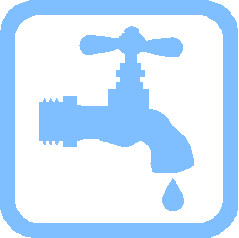Water Conservation
The water provided on our network is treated so that it is fit for human use and food preparation. It meets the European Communities (Drinking Water) (No 2) Regulations 2007. Treating and pumping water is expensive. It is, therefore in all our interests to conserve water as much as we can. This will cut down on our costs and also on your bills. The following guidelines should prove helpful for you:
- Use washing machines/dishwashers for full loads rather than washing small loads often
- If you use a basin in the sink to wash vegetables you can then use the water to water flower beds etc
- Use showers instead of baths.
- Toilet leaks are among the most common. To check for a leak, put a few drops of food colouring in the cistern. Do not flush for an hour or more. Then if the bowl water is coloured, there is a leak. Consider replacing the seals on the cistern or the flushing mechanism.
- Check any exposed pipework regularly for leaks and repair if necessary. Insulate any exposed pipes so that they do not burst in frosty weather.
- Ensure that all field troughs are level and that the ball valve is working properly, closing when the trough is full. Use troughs which have a cover over the ball valve so that the cattle cannot disturb it. Check that drinking bowls in sheds are working properly.
- Consider storing rainwater for use of stock, power washing etc.
- If building a new house, or installing new sanitary ware, install dual flush cisterns which use much less water.
- Read your meter often and monitor your water usage. If the red hand or centre rotor is rotating very rapidly or is moving at a time when you do not think any water is being used, you probably have a leak.
- If you are leaving the house for a long period switch off all washing machines etc. Read your meter as you leave. Read it again when you return. If the reading has changed, you probably have a leak.
Some interesting statistics:

A 0.8 mm stream from a tap uses 110 litres per day or 41,000 litres (41 m3) per year

A 1.6 mm stream uses 450 litres per day or 164,000 litres (164 m3) per year

A 3.2 mm stream uses 1800 litres per day or 655,000 litres (655 m3) per year
LRGWS 2012 © Copyright
